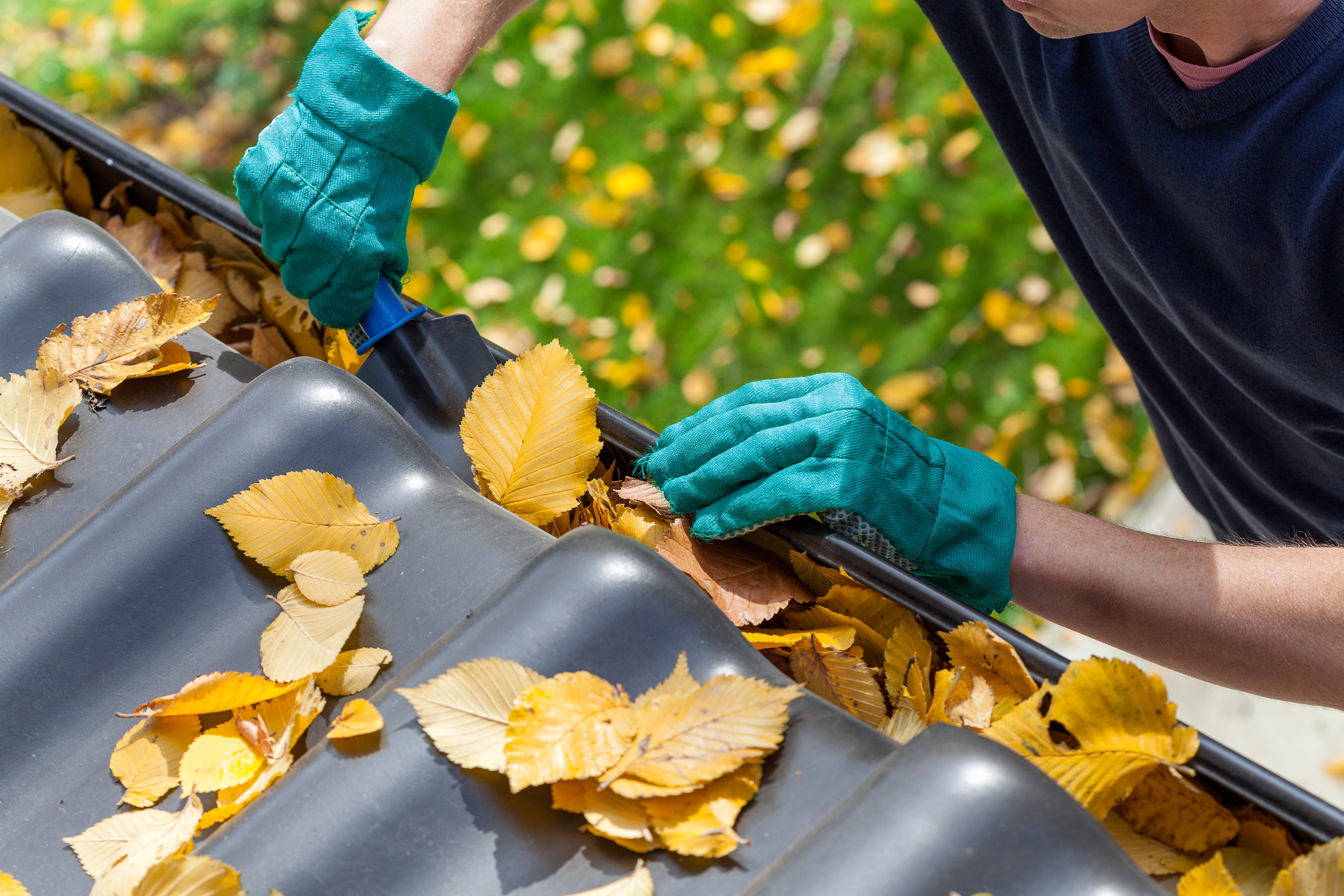Gutter Maintenance Tips to Protect Your Foundation
Many people believe the main purpose of their gutters is to keep water from pooling onto porches and walkways. In reality, gutters are designed to protect the structural integrity of a house by channeling water away from its foundation. However, in order for gutters to function properly, they can’t have holes, clogs or sags. Here’s your DIY guide to proper gutter maintenance.
Scoop out debris. Most gutters will accumulate debris over time, especially if they are surrounded by trees. Even when trees are scarce, gutters can still get clogged. Blowing leaves, birds’ nests and other obstructions can mysteriously develop in even the most isolated gutters. It’s important to remove this matter to allow water to drain properly. Begin at the drain outlet at the lower end of your gutter and use a thin garden trowel to scoop out any loose debris. This is generally easier to accomplish when debris is wet and pliable, not when it is dry and crusted on.
Flush out stubborn debris. If your gutters still contain debris, flush them out using a water hose. To generate the needed pressure, it is best to attach a high-pressure hose nozzle. Be sure to work toward the drain outlet as you spray. You may need to use a stiff scrubbing brush to loosen encrusted mud and debris, especially during the fall.
Clear out your downspouts. It’s very common for debris to clog downspouts, causing water to pool at the top. Test to make sure your downspouts are draining well. If they seem clogged or drain slowly, try to flush them out by spraying your hose into them from the top. If this isn’t successful, you can use a plumber’s auger to loosen and extract debris from the bottom. You can also use the auger to try to push debris out from the top. If all else fails, you can remove a portion of the downspout to gain easier access to the clog.
Things to Consider
You should regularly inspect your gutters to see if they’ve developed any leaks, holes or sags. You can seal leaks by caulking around the joint with a gutter sealant. If your gutter is sagging, it may be because the hardware has deteriorated, or the fascia board is rotting. If it’s the hardware, you can purchase replacements for a few dollars. If the cause is rotted wood, you will need to have the damaged portion of the fascia board replaced.
You should also check to make sure your gutters are pitched toward the downspouts, so water will flow properly. You should have at least a quarter-inch of slope for every eight to ten feet. To make sure your gutters are pitched well, put on a raincoat and inspect them during a storm. If your gutters don’t seem pitched well, you may need to remove a section to adjust and then rehang it. If you have poorly pitched seamless gutters, contact the company that installed them.
It’s also important to make sure your downspouts extend several feet away from your home, to make sure water isn’t flowing down and pooling around your foundation. You can attach gutter extensions to help propel water away from your home. Five feet is generally sufficient, as long as the ground slopes away from your foundation. If the ground slopes toward your home or if water collects in puddles, you may need to install an irrigation pipe to channel water further away.
2-10 HBW offers the most comprehensive Home Warranty coverage for homeowners. Let us help you protect your home.








